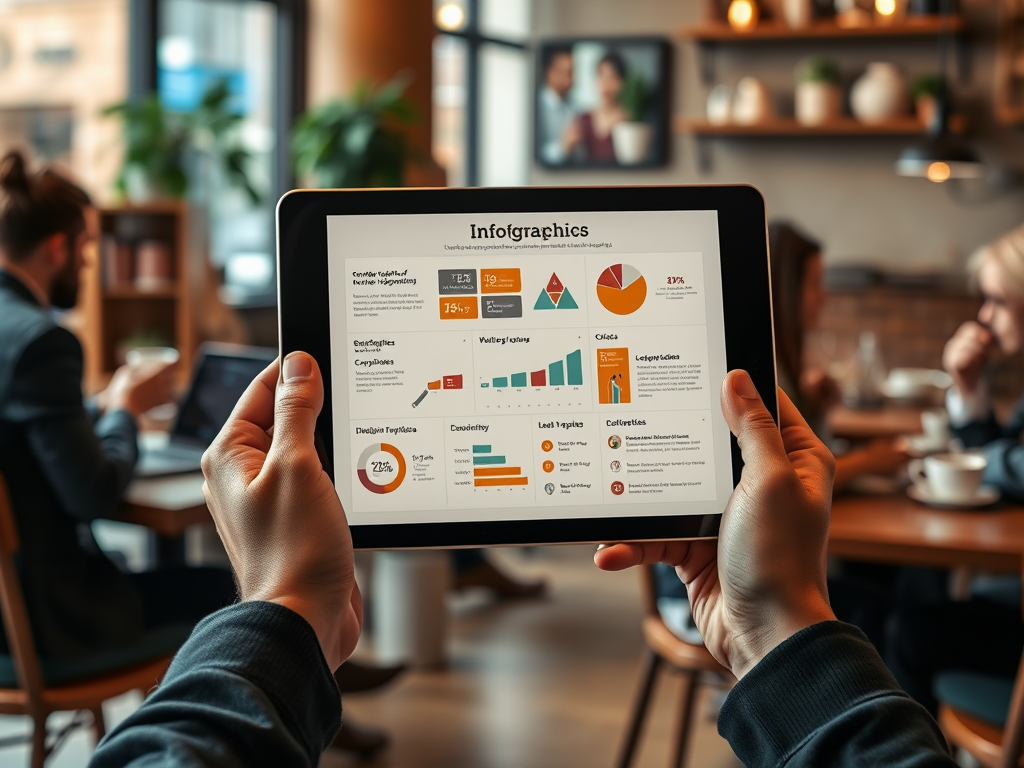In the rapidly evolving world of marketing, data is the lifeblood of strategy development and execution. As marketers gather more information than ever before, the challenge remains: how to communicate this wealth of data effectively. This is where data visualization comes into play, transforming intricate data sets into engaging and easily comprehensible visuals. A well-constructed visual does not just present information; it tells a story that can influence decisions and ignite action. By understanding how to employ data visualization in marketing, businesses can enhance their communication, improve engagement, and ultimately drive growth. The following guide will delve into the importance, types, best practices, and real-world applications of data visualization in marketing.
The Importance of Data Visualization in Marketing

In today’s information-saturated environment, businesses must leverage data to enhance their marketing strategies. Data visualization plays a vital role by making complex information more accessible and understandable. Not only does it help marketers identify trends, but it also influences customer perceptions through visually impactful narratives.
Enhanced understanding is a primary benefit; effective visuals can distill large amounts of data into key insights that are easily digestible. In a time when attention spans are short, consumers are drawn to attractive visuals that provide instant clarity.
Another significant advantage is that visual content tends to drive higher engagement rates. Whether it’s through social media, websites, or email marketing, incorporating visuals increases the odds of capturing a viewer’s attention. Research has shown that posts with images receive significantly more interactions than those without. Lastly, visual data representations support informed decision-making by highlighting trends and correlations that can impact strategies and business outcomes.
Types of Data Visualization Tools

Understanding the various types of data visualization tools is crucial for marketers looking to integrate visual data into their strategies effectively. Here are some common visualization tools:
- Infographics: Captivating graphics that combine visual design with data storytelling, perfect for sharing on social media.
- Dashboards: Centralized displays that provide real-time data insights and metrics at a glance, helping in monitoring campaigns.
- Charts and Graphs: Simple yet effective means to visually represent data comparisons, trends, and distributions.
- Maps: Geographic representations that help emphasize regional data trends and demographics.
| Type of Visualization | Best Used For |
|---|---|
| Infographics | Engaging storytelling and social media sharing |
| Dashboards | Real-time performance tracking |
| Charts and Graphs | Data comparison and trend analysis |
| Maps | Geographic insight into data |
Best Practices for Effective Data Visualization
To ensure your data visualizations are both effective and compelling, adherence to certain best practices is essential. First and foremost, simplicity is key. A cluttered visual can confuse rather than clarify, so aim to eliminate unnecessary elements. Focus on presenting a clear message while using consistent colors and fonts to create a cohesive look.
An important aspect to consider is knowing your audience. Tailor the complexity of your visuals according to their knowledge levels. For example, if your target demographic is less familiar with certain data types, consider using simplified representations.
Incorporating interactive elements can significantly enhance user experience. Consumers today appreciate being able to engage with visuals, exploring data in a more personalized way. Such interactivity encourages deeper connections and keeps users coming back for more.
- Maintain a clear and focused message.
- Ensure consistency in design elements.
- Engage your audience with interactive features.
Case Studies: Successful Data Visualization in Marketing
To bring the concept of data visualization to life, let’s explore some successful real-world applications. These case studies illustrate the power of data visualization in enhancing marketing efforts.
Example 1: Coca-Cola’s Data-Driven Campaigns
Coca-Cola is renowned for leveraging customer data to tailor its marketing efforts. Through visually compelling infographics, the brand was able to present its findings to stakeholders effectively. This informed the strategic decisions that enhanced consumer engagement, ultimately boosting sales.
Example 2: HubSpot’s Marketing Dashboard
HubSpot’s marketing dashboard is an excellent representation of how to centralize data visualization for user-friendliness. Key metrics are visually represented to enable users to monitor performance in real-time, leading to smarter and quicker decision-making.
Conclusion
Data visualization is not merely a passing trend; it is a critical component of contemporary marketing. By effectively utilizing data visualization, marketers can foster clearer communication, boost engagement rates, and enhance decision-making processes. As brands continue to navigate the complexities of consumer behavior and market dynamics, the ability to present data compellingly and accessibly will prove invaluable in driving successful marketing strategies.
Frequently Asked Questions
- What is data visualization? Data visualization is the graphical representation of information and data, enabling easier comprehension of complex datasets.
- Why is data visualization important in marketing? It helps marketers present data clearly and engagingly, fostering better communication and decision-making.
- What are some common tools for data visualization? Common tools include infographics, dashboards, charts, graphs, and maps.
- How can I improve my data visualization? Focus on simplicity, tailor content to your audience, and consider using interactive elements to engage users.
- Can data visualization impact marketing ROI? Yes, effective data visualization can enhance decision-making and strategy, leading to improved marketing ROI.



